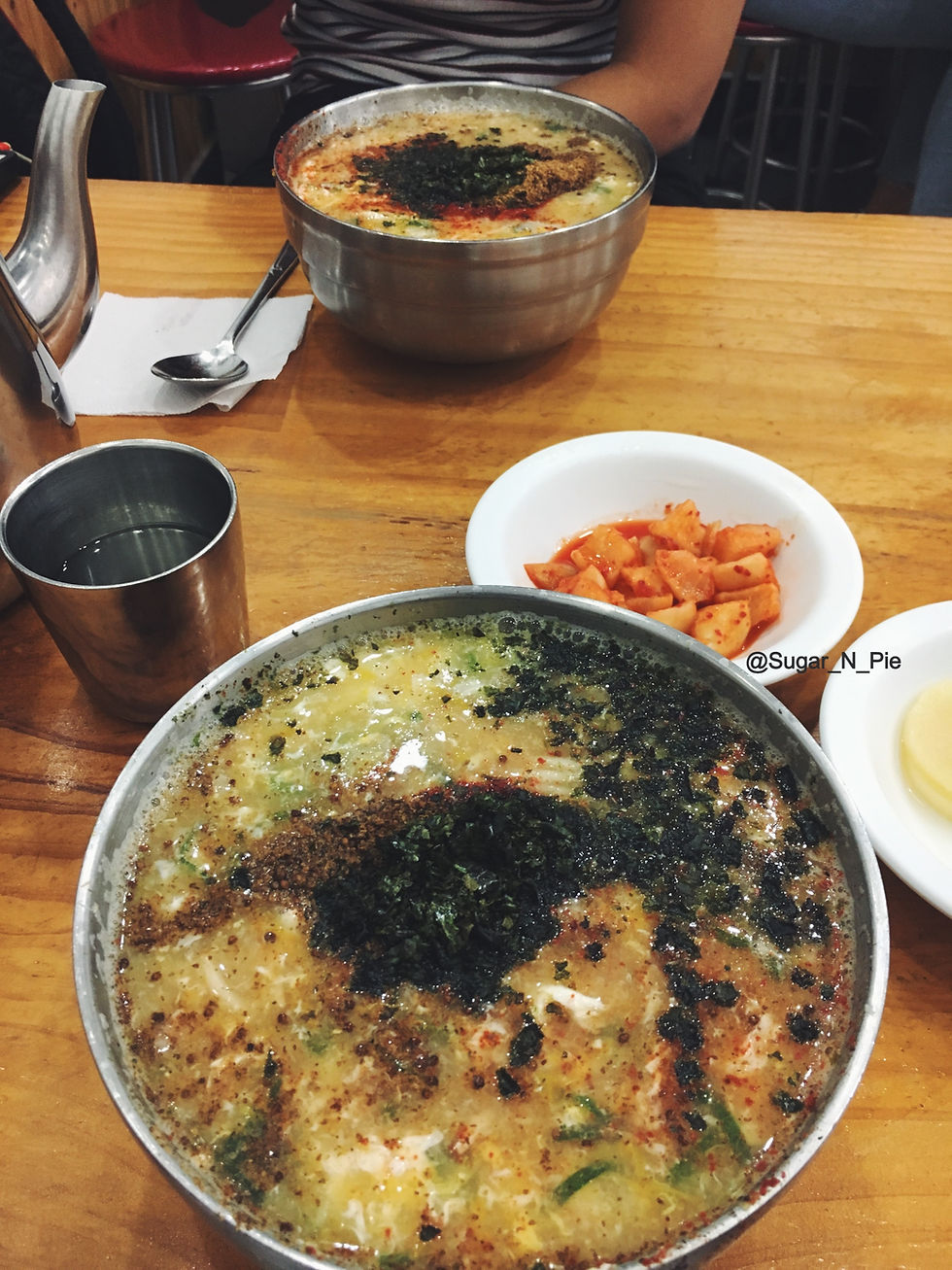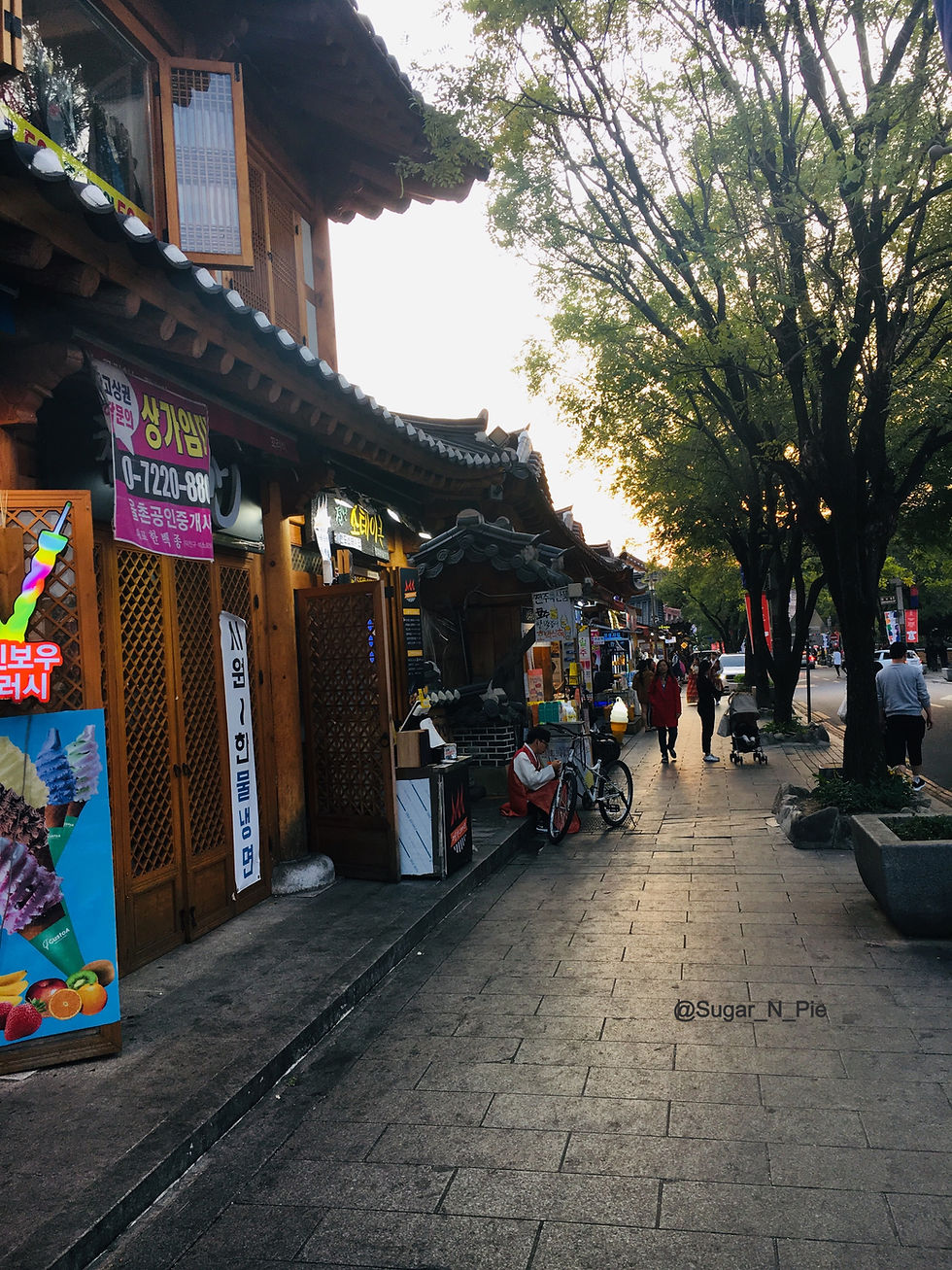13D12N Korea Itinerary|| D4 Jeonju: Veteran-Gyeonggijeon Shrine-Jeonju Hanok Village-Pungnammum Gate
- piepieworlds
- Oct 15, 2018
- 4 min read
Updated: Sep 10, 2023
<ins class="klk-aff-widget" data-wid="36886" data-adid="748633" data-actids="2999,17677,16413" data-prod="mul_act" data-price="false" data-lang="" data-width="336" data-height="280" data-currency=""><a href="//www.klook.com/">Klook.com</a></ins>
<script type="text/javascript">
(function (d, sc, u) {
var s = d.createElement(sc),
p = d.getElementsByTagName(sc)[0];
s.type = "text/javascript";
s.async = true;
s.src = u;
p.parentNode.insertBefore(s, p);
})(
document,
"script",
"https://affiliate.klook.com/widget/fetch-iframe-init.js"
);
</script>
Hi, welcome to this Korea travel itinerary. We gonna share our most wonderful 13-days journey in South Korea, travelling from the south to north. Hope the blog could help you to finetune your trip.
Jeonju Itinerary
Day 1 : Historical City
Veteran-Gyeonggijeon Shrine-Jeonju Hanok Village-Pungnammum Gate

On our day-4th in Korea, we went to another beautiful city in Korea, Jeonju. The city is designated as International Slow City. While the rest of the city has been industrialized, Jeonju people are retaining the historical charms and traditions of their city.
After having breakfast and checking out our hotel, we took intercity bus from Seobu Bus Terminal. Each bus ticket to Jeonju costed 22,100won. The journey took us around 4 hours. We arrived Jeonju Bus Terminal at around 1.30pm.
If you have extra budget, may also try on the KTX train. It moves faster and saves time.
Where we stayed: Sanminjae

For a complete Korean culture experience, during our Jeonju trip, we stayed in a Korean traditional house (hanok) guesthouse named Sanminjae. The hanok is small and warm, hosted by pair of cute local elders. They can’t speak english, but they always tried to communicate with us with the aid of translator.
The hanok is as same as seen in Korean drama, made up of tile roof, clay stone gate, plain white hanji window, futon, wooden wall and wooden flooring with heating system.

Jangdok (crock) can be found at the corner of the yard. It is usually used to store or ferment food such as Kimchi, red pepper paste, sauces etc. Other than the inconsistent hot water supply, overall it deed was fine home-stay experience.
The guesthouse is in walking distance to the main street of Jeonju Hanok Village. So after unloading our baggage, both of us started our culinary journey in Jeonju Hanok Village! ヾ(≧▽≦*)o
First stop: Veteran

Our first station was Veteran, a Kalguksu (buckwheat noodle soup) shop. The kalguksu served was slightly different from regular kalguksu we tried before. The broth was flavorsome with topped of seaweed, chili flakes and perilla seed powder which gave a perfect match to the soft chewy noodles. A must try!!! The mandu (dumpling) was pretty good too. We were totally full after finished up the generous portion of Kalguksu.
Price
Kalguksu 6500won, Mandu 5000won
Second stop: Gyeonggijeon Shrine

Coming out from Veteran, we had a slow walk in Gyeonggijeon Shrine. YT was super duper excited on the way to the shrine, as Korean drama “Moonlight Drawn By Clouds” starred by her idol, Park Bo Gum, was filmed at here before.
Gyeonggijeon Shrine was the historic site erected in 1410 and where the founder of Joseon dynasty, King Tae-jo and his wife’s mortuary tablets were enshrined.
The place itself has nothing too extraordinary conpared to Gyeongbukgong. But indeed it’s still a pleasure site to wander around. No crowd, the environment was quiet and chill, very nice to take photo.
Third stop: Jeonju Hanok Village

Walking out from Gyeonggijeon Shrine, we were in the middle of Jeonju Hanok Village main street.
Jeonju Hanok Village is the MUST VISIT place in Jeonju. It is the largest hanok village in Korea, which has more than 800 Korean traditional houses (hanok) well retained here. Many of these hanok have been furnished and turned into business used eg. restaurants, hanbok rental shops, accessories stalls, airbnb etc, making this beautiful neighborhood more lively.
There are dozen of amazing street food, eg. giant shrimp dumplings, cheese skewers, baguette, grapefruit beer. Each of it was delicious and mouthwatering. I swore this day was the day I ate the most but also one of my favourite day in Korea. It was joy to eat all along the street while appreciating the beauty of historical charms around.
Lucky of us, at night, there was special function, Hanbok Culture Night helding here. We got a chance to know more about Korean traditional dress. And Epik High was one of the performance guests!

Fourth stop: Pungnaman Gate
After the culture night ended, we continued our ambitious food trip. On the way to Nambu night market, we also passed by Pungnammun Gate. The historical gate is located in the middle of big roundabout. Originally Jeonju had 4 city walls which built in Joseon dynasty. Due to the fire happened during Japanese invasions, this gate is the only one left standing now. looks lonely,

So bad, we couldn't find the night market. The street was quiet and only few shops were opened restocking their goods. So we went back to our guesthouse for rest as the night was also started to turn cold and colder.
All above is our Day 4 itinerary in Korea.
Hope our travel experience would able to help you in exploring Korea.
See you next day, bye (❁´◡`❁)















Kommentare